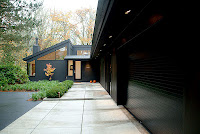A very interesting exhibition will be on display this summer at the
Museum of Contemporary Craft in Portland. “Design with the other 90{487c014636624d4af17bb225b00e1b760d2800949b88e91f17e8e90a103d6534}: Cities” has many similarities with the MoMa exhibition ““Foreclosed: Rehousing the American Dream”, which we discussed in a previous posting. This exploration delves into many of the same issues surround-ing urban growth, but on a global scale. Like Foreclosed, the issue of housing explored, but many other functional designs are established in third world countries in need of help.
Organized by Cynthia Smith of Cooper-Hewitt National Design Museum, “Design with the other 90{487c014636624d4af17bb225b00e1b760d2800949b88e91f17e8e90a103d6534}” focuses on design solutions that address the 90{487c014636624d4af17bb225b00e1b760d2800949b88e91f17e8e90a103d6534} of the world’s population that are not traditionally serviced by the professional design community. Coming up with interesting design solutions a global network was formed, with information available through an online database. Complex issues and resulting solutions are explored regarding the unprecedented rate of urban growth projected for the next 20 years. The main focus is on the global south and many wonderful design solutions have been made.
The Museum of Contemporary Craft will be hosting the “Cities” portion of this ongoing project, second in a series of exhibitions that demonstrate how design can be a dynamic force in
transforming and saving lives. Cynthia Smith and a ten person advisory committee examined the multi-disciplinary and over-lapping relationships between urban planning and design, education, social entrepreneurship, climate change, sanitation and water, migration, public health, and housing.
To learn more and to view some of the amazing designs that have already been put in place world wide click on the following link. https://www.designother90.org/cities/home


